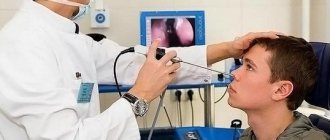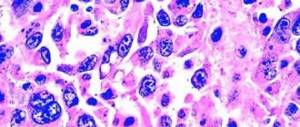Herpetic stomatitis, which is most often diagnosed in young children, is considered a widespread viral inflammation of the oral cavity.
Features of the development of the immune system of a child’s body determine the high incidence of acute herpetic infection.
Adults experience herpes involving the oral mucosa and gums less often, but the chronic course of the disease is recorded more often.
Pathogenesis and causes
herpetic stomatitis
Almost 100% of the population is infected with herpes simplex virus types 1 and 2 and more than half suffer more than one relapse of infection during the year, sometimes with inflammation of not only the lips, but also the gums, mucous membrane of the cheeks and palate.
Between the ages of six months and 5 years, children are diagnosed with HSV in 60% of cases, and by adolescence, 90% of children are carriers.
The maximum incidence rates occur during the period when children attend organized children's groups.
In every tenth child, acute herpetic stomatitis becomes chronic and then manifests itself as periodic exacerbations.
The virus causes damage to the nervous system and internal organs. Vesicles on the skin and mucous membranes are considered only an external manifestation of the infection.
At the first meeting, the pathogen infects nerve fibers, replicating in their cells, penetrating the epidermis of the skin and mucous membranes.
As you recover from an acute infection, the virus persists in an inactive state in nerve cells. When the infection generalizes, internal organs and the brain are also involved in the pathological process.
The severity of herpetic stomatitis is determined by the state of the child’s immunity. Sometimes there is a combination of different forms of viral infection.
Herpes stomatitis very often develops in children older than six months, since during this period the level of maternal antibodies against herpes in the blood gradually decreases.
In addition, the disease is promoted by imperfect general and local immunity of the child. The mucous membranes of the oral cavity are depleted of protective immunoglobulin A and lysozyme, and lymphocytes are not able to clearly and quickly respond to the introduction of the virus.
In the pathogenesis of the disease, the structure of the children's mucous membrane in different age ranges, the activity and specificity of local immunity are of significant importance.
Accordingly, if a herpetic lesion in the mouth appears in an adult, this means that the mucous membranes are not functioning sufficiently.
Children become infected through aerosol and household routes. General purpose toys, household items, dishes and close contact with the virus excretor become factors in the transmission of the pathogen.
The first encounter with HSV in a child ends in lifelong carriage. The number and symptoms of exacerbation are strictly individual.
While the disease is not uncommon in children, its occurrence in adults indicates problems in the oral cavity. Risk factors and provocateurs of herpetic stomatitis in adults are:
- smoking;
- caries and periodontal disease;
- a large number of dentures, especially removable ones (trauma to the mucous membrane);
- diabetes;
- chronic tonsillitis;
- pregnancy;
- infections that reduce immunity (HIV, tuberculosis);
- hormonal and antitumor treatment;
- long-term antibacterial therapy;
- avitaminosis;
- chronic stressful situations;
- diseases of the salivary glands and insufficient saliva secretion.
Since an adult is already infected with the herpes virus, the listed provoking factors are sufficient to worsen the infection.
Prevention
There are 2 ways to prevent AHS:
- Maintain immunity at the proper level: regular intake of vitamins A, C and foods containing vitamins; spend more time in the fresh air; eat onions, garlic, nettles, wild garlic, carrots.
- In addition to observing basic rules of oral hygiene, decoctions for rinsing your mouth will come in handy.
Folk recipe for prevention: for 200 ml of cold water, 1 tbsp. l. daisies. Boil in a water bath for 15 minutes. Let it sit. In another container - 0.5 tsp. soda and salt pour 100 ml of boiling water. Add chamomile. The mixture should be enough for 3 rinses.
You can also use the following recipe for rinsing: 1 tsp per 200 ml of cold water. chamomile and plantain. Boil over low heat for 1 minute from the moment of boiling. These decoctions can be used as prophylaxis and as a rinse before applying medications. Rinse 10 minutes before application. It has no contraindications, except for intolerance to the components.
Clinical picture
photo herpetic stomatitis in children
The incubation period in children lasts from two days to two weeks. In a child during the neonatal period, incubation can last up to a month.
Herpetic stomatitis, like many viral infections, is characterized by a prodromal period, manifested in weakness, asthenia, headache, joint and muscle pain.
The virus enters the blood and causes intoxication. In adults, there is no prodromal period during relapse.
After the prodrome, the height of symptoms comes, which is divided into two stages: catarrhal and the rash itself. This is followed by extinction of symptoms and clinical recovery.
Forms of acute herpes
Symptoms of acute herpes are divided into mild, moderate and severe forms. Many people are interested in how long herpetic stomatitis lasts and the form of the disease depends on it.
Herpetic stomatitis is characterized by the formation of specific ulcers - aft. Aphthae are the result of a violation of the integrity of herpetic vesicles; as a result of their opening, an ulcer with a whitish bottom is formed, with a rim of hyperemia around it. The ulcers are the size of a match head and are painful.
With a mild form it is noted:
- general condition and well-being are satisfactory;
- insignificant signs of prodrome, a sharp increase in body temperature to 37-37.5 ° C;
- areas of redness and swelling of the mucous membrane are noted in the mouth, mainly along the edges of the gums;
- moderate pain when eating;
- a day after the gums become red, isolated painful aphthae appear;
- As the aphthae epithelialize, gingivitis persists for two days, especially in the area of the gum margin of the front teeth.
Mild infection lasts 4-6 days, then symptomatic recovery occurs. No changes were noted in the clinical blood test. The child's immunity is not affected.
The moderate form by :
- lymph nodes enlarge;
- signs of intoxication are expressed (headache, chills, sleep disturbance, loss of appetite);
- temperature rises to 38-39°C;
- there is severe swelling and redness of the mucous membrane in the mouth, severe pain, and inability to eat;
- herpetic gingivitis is significantly expressed, the gums are loose and bleed;
- on a hyperemic basis, 20-25 aphthae appear, as the disease develops, new elements appear;
- salivation is profuse, saliva becomes viscous and viscous;
- healing of each aphtha lasts up to 4-5 days, gingivitis remains for more than a week.
The total duration of the disease is about two weeks, then clinical recovery occurs.
A blood test is characterized by an increase in ESR, a decrease in the level of leukocytes or a slight increase, and an increase in the level of monocytes and lymphocytes.
Severe form of acute herpetic stomatitis:
- the skin is pale, the child is whiny, refuses to eat, complains of headache, pain in muscles and joints, activity is sharply reduced;
- Possible nausea and vomiting associated with damage to the gastrointestinal tract by the virus;
- enlargement of the cervical group of lymph nodes;
- temperature rises to 40°C;
- pain in the mouth is noted at rest, drinking is difficult, eating is impossible;
- excessive salivation;
- gingivitis is pronounced, the mucous membranes are swollen and hyperemic, bleeding;
- within a day, a large number of herpetic blisters appear in the mouth, around the mouth, on the wings of the nose, earlobes, and hands;
- in the oral cavity, aphthae are localized on the tongue, soft and hard palate, gums, and connect with each other, forming areas of necrosis;
- The smell from your mouth becomes unpleasant.
In response to the appearance of new bubbles in the mouth, the temperature rises. Aphthae heal slowly, the total duration of the disease is 3-4 weeks.
Severe forms are rare. In a general blood test, in addition to the acceleration of ESR, a band shift to the left, toxic granularity of leukocytes and the appearance of juvenile forms are noted.
Herpetic stomatitis in moderate and severe forms reduces the child’s immunity, recovering after two weeks. Therefore, after symptomatic recovery, it is necessary to observe a protective regime and avoid visiting crowded places.
Patients with severe herpes are treated in hospital. Since the herpes virus is characterized by damage to both the gums and the entire mucous membrane of the oral cavity, the medical history will indicate a diagnosis according to ICD-10 B00.2 “herpetic gingivostomatitis”.
In adults, chronic herpetic stomatitis worsens several times a year when exposed to provoking factors.
Symptoms during relapse are described by a slight increase in temperature, redness and soreness of the gums, their loosening and bleeding. Next, small aphthae typical of herpes form. Their number depends on the severity of the disease.
In case of chronic herpetic infection, without exacerbations, gingivitis, bad breath, and coating on the tongue are noted. In addition, not only stomatitis worsens, blisters appear on the lips and wings of the nose.
Aphthae that are not associated with the herpes virus may form in the mouth. How to determine the difference between stomatitis and herpes in the mouth? Chronic aphthous stomatitis is characterized by:
- absence of rashes on other areas of the skin and mucous membranes;
- general health does not suffer;
- aphthae are single (usually one), can be large and painful;
- the appearance of an ulcer in response to injury;
- frequent localization - the inner surface of the lip, cheek, under the tongue, on the frenulum;
- the presence of an allergic predisposition.
You can distinguish herpes from stomatitis using PCR analysis. To do this, a swab is taken from the area of the aphthae to check for the presence of the herpes virus.
Pediatrician Komarovsky, popular on the Internet, recommends that parents draw their attention to chronic recurrent stomatitis in children. If aphthae regularly appear in a child’s mouth, it is necessary to perform skin allergy tests, sanitize the oral cavity, and treat chronic infections together with an immunologist.
Treatment of herpetic stomatitis
Symptoms and treatment of herpetic stomatitis are interrelated, since therapeutic tactics are determined by the severity of the infection. Treatment of viral inflammation is complex and
implies a general and local approach.
How and how to treat herpetic stomatitis in a child is of interest to many parents. First, it is necessary to organize feeding and fluid intake, taking into account the pain.
Food should be warm and pureed, sour and spicy foods should be excluded. Before eating, the mucous membrane and gums are anesthetized. For this purpose, an anesthetic solution and lidocaine gels are used if there are no contraindications.
Solcoseryl dental paste and Cholisal gel are considered safe for treatment in children. The products are applied to the inflamed mucous membrane, and after some time the child is fed.
It is important to ensure the supply of fluid to combat intoxication. To do this, use plain warm water, tea or dried fruit compote without sugar, and milk. Acidic drinks are excluded.
Treatment of mild herpes stomatitis in children does not require general therapy; local treatment is sufficient. Moderate and severe degrees imply the prescription of antiviral drugs:
- acyclovir;
- interferon preparations or its inducers.
To restore immunity, they take immunomodulators (Likopid, Polyoxidonium, Derinat, Imudon, Sodium Nucleinate and other drugs), B vitamins. These drugs are used to fight the virus in children and adults.
Antiseptics are used locally: Miramistin, Chlorhexidine. Sea buckthorn and rosehip oils are also used, which are safe to use and naturally heal mouth ulcers.
Treatment in adults also includes local anesthetic gels and pastes, as well as taking Acyclovir, Famciclovir, Valacyclovir, and immunocorrectors. During pregnancy, acyclovir drugs are used in cases of moderate or severe infection.
Chronic herpetic stomatitis in adults often requires long-term use of acyclovir. To prevent relapses, it is important to exclude and promptly treat oral infections.
Diagnostics
The disease can be confused with some fungal diseases. To accurately determine the viral origin, the following tests are performed:
- ELISA – the presence of antibodies of a given type to combat a given pathogen; not effective in cases of low immunity and in the initial stages of the disease.
- PCR – high efficiency. But it is rarely carried out due to the long period of processing the results.
- Epithelial biopsy is the most effective method; it allows you to determine the herpes virus and its stage 3-6 hours after collecting the material.










